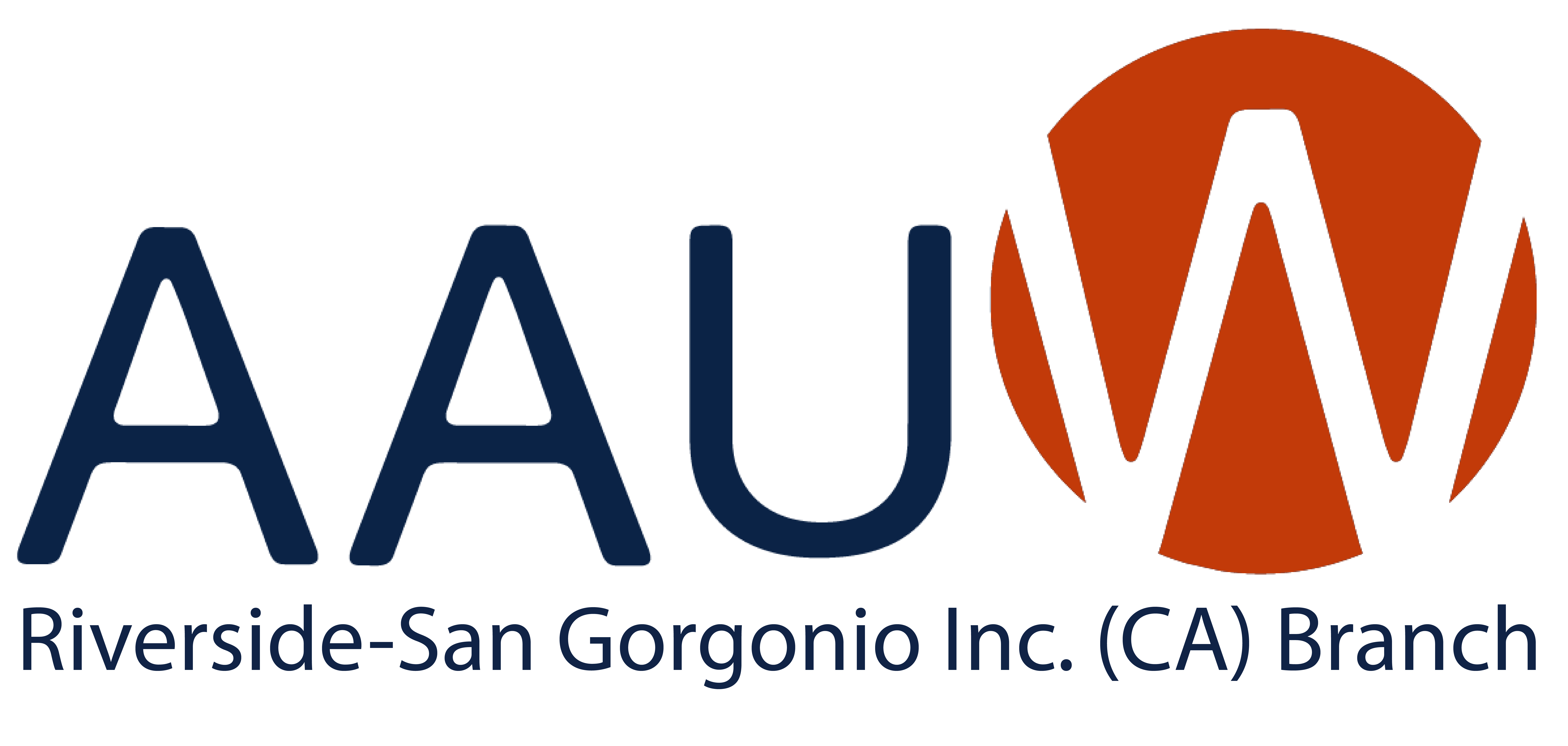By Taffy Geith
 Ruthann Mlcoch, Administrative Assistant, welcomed members and guests to the meeting of the Riverisde Branch of AAUW on April 17, at 10:00 AM at Habitat for Humanity, 2180 Iowa Ave. Carlese Chandler, Membership Chair, thanked those members who had sent in their renewals, and reminded others that remittances are due.
Ruthann Mlcoch, Administrative Assistant, welcomed members and guests to the meeting of the Riverisde Branch of AAUW on April 17, at 10:00 AM at Habitat for Humanity, 2180 Iowa Ave. Carlese Chandler, Membership Chair, thanked those members who had sent in their renewals, and reminded others that remittances are due.
Jo Turner introduced Steve Lech, Park Planner at Riverside County Regional Park, and Waste Resources Manager also of Riverside County. Steve loves history, and co-writes a history column for the Press Enterprise called “Back in the Day,” besides teaching and training docents for the Mission Inn. He has been a collector of vintage postcards of Riverside for twenty years and is here to share their visual beauty along with their historical significance.
In 1900 picture postcards were advertisements for towns trying to lure visitors and residents to California. Riverside had lots of wealth connected to the orange industry, so postcards showcased orange production as well as the vast acreages devoted to orange groves. Steve showed several postcards depicting panoramas of Riverside from Mt. Rubidoux (1907), Main St. (1901), and also one of the Raincross symbol (1908). In 1912 Riverside had the highest per capita income of any city in the country. This is evident in the architecture and elegant ambiance of certain structures: the interior and exterior of Rouse’s Department Store (1926); Andrew Carnegie Library (1902) Mission Revival; The County Court House, (1902) Beaux Arts Revival; The original Post Office (1912), later the Police Station and now the Riverside Municipal Museum, Mission Classical; The Municipal Auditorium dedicated after WWI to the dead patriots –chosen instead of an equestrian statue, Mission Revival / Moorish. All of these buildings bespeak the civic pride and care taken to have a city that reflects the industry, history, taste and wealth of its people.
A postcard showing a carved granite statue of Juan de Anza standing in Newman Park on the corner of Market and 14th St. may remind drivers that Juan de Anza came through Riverside in the 1770’s and camped along the Santa Ana on his way to Alta Ca. The sculptor, Sherry Peticola, used a local resident, a descendant of de Anza’s brother, as a model. The modern sculpture was dedicated in 1940.
Steve had many postcards of schools that are no longer standing. The original Grant School (1910) had an imposing grandeur about it and had many stories. It served students from K to eighth grade. In 1904 the Salt Lake Train Depot was built, –it later became the Union Pacific and has been “repurposed” now for other businesses. It has that downtown beauty and must have been a popular postcard. In 1905 a postcard showing Magnolia Avenue was created as an advertisement. A rail line runs through it and it soon became the main drag heading south. Magnolia Avenue was a prototype for Victoria Avenue and other such shaded streets in Southern California.
Magnolia Center came into being in 1925-28 – a cluster of shops that met the needs of the population that had moved south. In 1956-57 the Riverside Plaza opened and this was the beginning of the end for downtown. The Plaza had a large parking area which was an added convenience for shoppers. Sages at Market and Beatty (1951) was the first large supermarket to include dairy, bakery, garden and coffee shop in addition to the regular groceries and produce. It closed in 1973. Steve did not give a name to these architectural styles –50’s functionalism?
Steve showed postcards of the original Riverside General Hospital, now replaced by the one in Moreno Valley. He showed the early Fairmount Park, designed in 1911, on land that was swampy and worthless. This Park is still in use today. The postcard of the UCR Library (1955) shows the original building –beautiful in its simplicity. The last postcard shown was of two vintage cars going up the drive to Mt. Rubidoux (1908) for the Easter Service. (Steve mentioned that this postcard may have been staged since it showed a woman driving.) This was an appropriate final postcard since we are near Easter, but also it underscores the tremendous changes that Riverside has experienced since the early beginnings shown in the 1900 postcards used for advertisements.
Viewing these vintage postcards and hearing Steve Lech’s historical facts was a pure joy for all who were present. (Space here is limited and not all the postcards shown were mentioned in this report.) Riverside’s culture has been transformed, our population has not only increased but has moved south and east, and our industries have changed. However, downtown is revitalizing itself, and the culture is bringing new challenges. We have a new appreciation of the uniqueness that is Riverside — thanks to Steve. We will be looking for his columns in the Press Enterprise.
